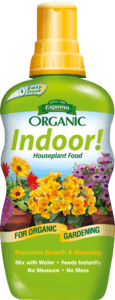Photo by: Lesley Davidson
We all love ferns, they are a classic houseplant. Ferns come in all kinds of sizes, textures and colors. Yet as far as plants go, they can be fussy. Laura from Garden Answer has the scoop.
If your fern is happy and healthy, great job! You can probably skip some of the topics toward the end.
Now let’s take a look at your fern and double check it is living its best life.
Here are 10 things to keep in mind as you tend to your fern:
Light Exposure
Contrary to popular belief, ferns need quite a bit of light. Though, they don’t like to be in direct sunlight as their foliage will change to a lighter yellow color or burn. Keep them near a place that receives plenty of sunshine throughout the day.
Only few varieties can handle shade and moisture like most people think. Check your plant tag for the most accurate information for your fern.
Temperature
Ferns like their surroundings to be similar to what we like between 65 and 75°F, matching the temperatures in our home. They don’t like it too drafty so keep them away from doors that lead outside and away from air vents.
Humidity
This is the most important thing to be aware of for keeping your fern healthy, especially if you live in a dry climate. Placing your fern in a bathroom or kitchen near the water source can help, since they typically get more moisture in there naturally.
For a more decorative option, place pebbles in tray with some water and place your fern on top. The moisture will carry up to the foliage as it evaporates. Add water to the tray as needed.
Soil Type
Use Espoma’s Organic Potting Mix for your ferns. Organic potting mixes have the right kind of drainage, and will hold just enough water that is needed without drowning your fern.
Repotting
Typically, ferns need to be repotted every two years. Check its roots once a year. If the roots are starting to circle around the container, it is time to repot. If there is still soil around the edge of it, it should be fine for another year.
When it is time to repot your fern, only go up one size for your container. Be sure there is a drainage hole at the bottom of your container. Place a small layer of Espoma’s Organic Potting Mix in the bottom and fill around the sides as needed.
Watering
Ferns like to be consistently damp, but not wet and soggy like many people think. Each fern and home is a bit different, especially this time of year. Water your fern and keep an eye on it. If the soil at the top feels dry, water it again.
Fertilizing
Ferns like to be fed about once a month during their growing season. Each zone and climate will have a different growing season, which you can ask your local garden center about. Feed your fern with Espoma’s Organic’s Indoor! liquid plant food. Check the label for instructions on how to use.
Grooming
All houseplants should be groomed about once a month. Remove any foliage that looks damaged, unhealthy or is turning brown or yellow. Discard any leaves or debris that is on top of the soil to keep insects and disease at bay.
Insects
The most common insects to watch out for are mealybugs, aphids, fungus mites, white fly and spider mites for just about any houseplant. If you are unsure of the insect you are dealing with, take a picture and take it to your local garden center. They will be able to offer suggestions on how to get rid of it.
Toxicity
Ferns are non-toxic, but it is still a smart idea to keep your pets and kids away from eating or playing with a fern. That might just cause a tummy ache or a mess in your home!
Drop any other questions below in the comments and we will help you out the best we can!
Quick links to Garden Events In…








Leave a Reply
You must be logged in to post a comment.